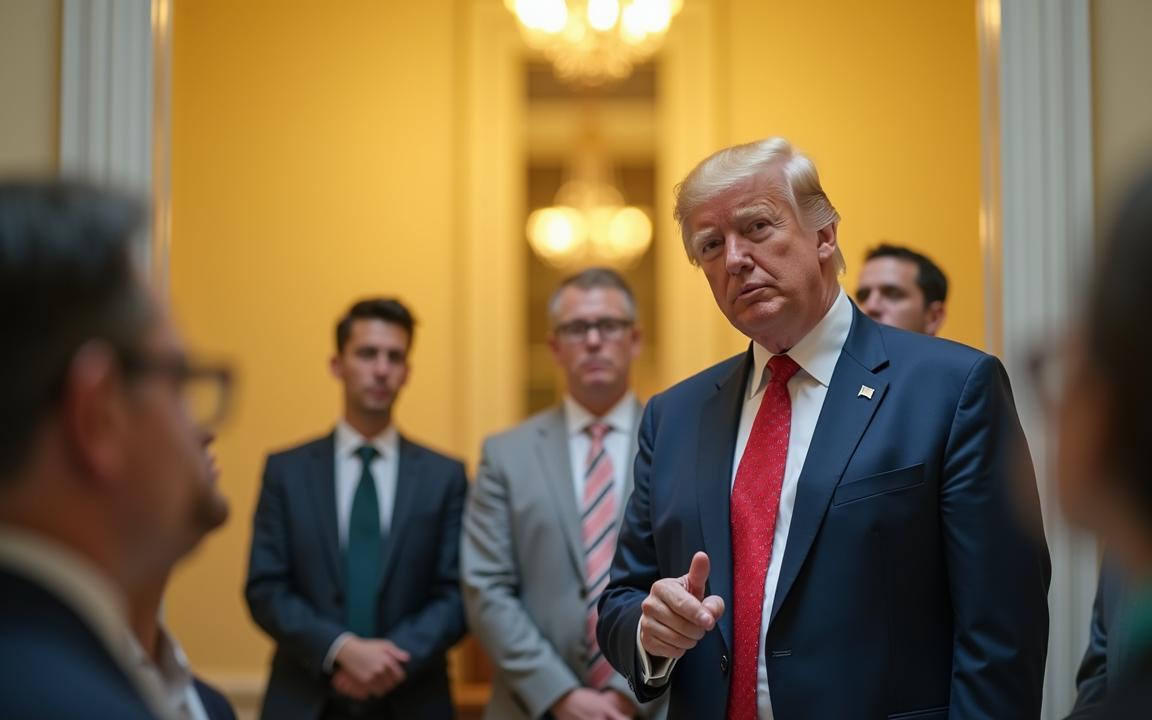President Donald Trump, doubling down on his “America First” trade agenda, signed executive orders imposing 25% tariffs on imported steel and aluminum, setting the stage for renewed trade tensions with key allies and adversaries alike.
The move, portrayed by Trump as a means to revitalize domestic industries, has already drawn sharp condemnation and threats of retaliation from around the globe.
“This is a big deal — making America rich again,” Trump said as he signed the orders, underscoring his unwavering commitment to reshaping the US’s trading relationships.
Revitalizing US industries: a costly proposition?
While the stated goal is to promote domestic steel and aluminum production and employment, these tariffs are poised to increase costs for US manufacturers who rely on these metals, potentially offsetting Trump’s pledges to lower the cost of living for American families.
Peter Navarro, White House senior counselor for trade and manufacturing, framed the tariffs as essential for national security.
“This isn’t just about trade. It’s about ensuring that America never has to rely on foreign nations for critical industries like steel and aluminum,” he asserted.
Global condemnation and retaliation threats
Even before the formal announcement, the international community voiced strong opposition.
The European Commission labeled the tariffs “unlawful and counterproductive,” and German Chancellor Olaf Scholz vowed that Germany, a major steel exporter to the US, could retaliate “within an hour” of any US action.
Beyond steel and aluminum
Trump is poised to unveil a new “reciprocal tariff” strategy that would match US import taxes to those imposed by other nations on American products.
This move, aimed at countries like the European Union which maintains a 10 percent tariff on cars imported from the United States, would further escalate trade tensions and mark a significant departure from decades of US policy favoring lower tariffs and global integration.
The new approach would further increase US trade barriers, particularly on products from nations such as India and Brazil.
North American fallout
The steel and aluminum tariffs are also likely to strain relations with Canada and Mexico, key US trading partners and major suppliers of these metals.
Last week’s pause on separate import taxes on goods from Canada and Mexico, linked to concerns over immigration and drug trafficking, now appears increasingly fragile.
Canada, the leading foreign supplier of steel to the US, shipped 6.6 million tons in 2023. Brazil, Mexico, South Korea, and Vietnam also rank among the top import sources.
China in the crosshairs: addressing global steel overcapacity
Though China is not a major direct supplier to the US, its dominance in the global steel industry is a primary concern for the Trump administration.
With its domestic economy slowing, China’s steel mills continue to produce more steel than the country can consume, creating a massive global surplus.
According to the Organization for Economic Cooperation and Development, the excess steel available on global markets in 2023 reached 551 million metric tons, four times the EU’s total output, depressing global prices and making it difficult for US steelmakers to compete without tariff protection.
Closing loopholes
The new tariff regime aims to address loopholes in the existing system, which have allowed countries like China and Russia to circumvent import taxes by shipping steel and aluminum through third countries like Canada and Mexico.
The administration plans to institute requirements for steel and aluminum to be cast or smelt in North America to qualify for tariff-free access to the US market, and will intensify oversight of industrial metals shipments to prevent product mislabeling.
While the tariffs have garnered support from some segments of the US steel industry, evidenced by Scott Paul’s remarks, not everyone is on board.
As Scott Paul, president of the Alliance for American Manufacturing, a nonprofit backed by the United Steelworkers union, stated, “The underlying circumstances that led to the original tariffs on steel and aluminum in 2018 haven’t changed: The metals are crucial to our national security, and China’s overcapacity continues to roil global markets.”
Despite the broad imposition of the tariffs, Australia is already seeking an exemption.
Prime Minister Anthony Albanese said he had pressed his nation’s case for an exemption from the tariffs during a “very constructive and warm” phone call with the US president.
Trump previously imposed similar tariffs on steel and aluminum in 2018, which were later amended to allow exemptions for major allies and replace them with quotas for other nations.
However, these measures failed to achieve their intended goals, and subsequent studies have shown that the first-term tariffs resulted in a net loss of US jobs.
As Kadee Russ of Harvard University and Lydia Cox of the University of California at Davis concluded in a 2020 study, “The job losses created by putting these steel-using industries at risk appear to be substantial, and well in excess of any jobs that may have emerged in the steel-production industry as a result of the tariffs.”
Global fallout and potential Retaliation
The tariffs have triggered strong reactions in Canada and Europe. Industry Minister Francois-Philippe Champagne called the tariffs “totally unjustified,” while the Canadian chapter of the United Steelworkers union urged the government to retaliate.
In anticipation of Trump’s return to the White House, E.U. officials drafted lists of potential retaliatory tariffs, even as they made clear that they would rather negotiate.
European leaders have warned that a trade war would harm both sides and only benefit adversaries including Russia.
In Brazil, Finance Minister Fernando Haddad said the government wouldn’t take any action in response to the tariffs until they were formalized. José Augusto de Castro, the executive president of the Brazilian External Commerce Association, told the newspaper O Globo that the tariff was “extremely high and without any technical basis.”
The post Trump imposes steel and aluminum tariffs, sparking global trade fears appeared first on Invezz

